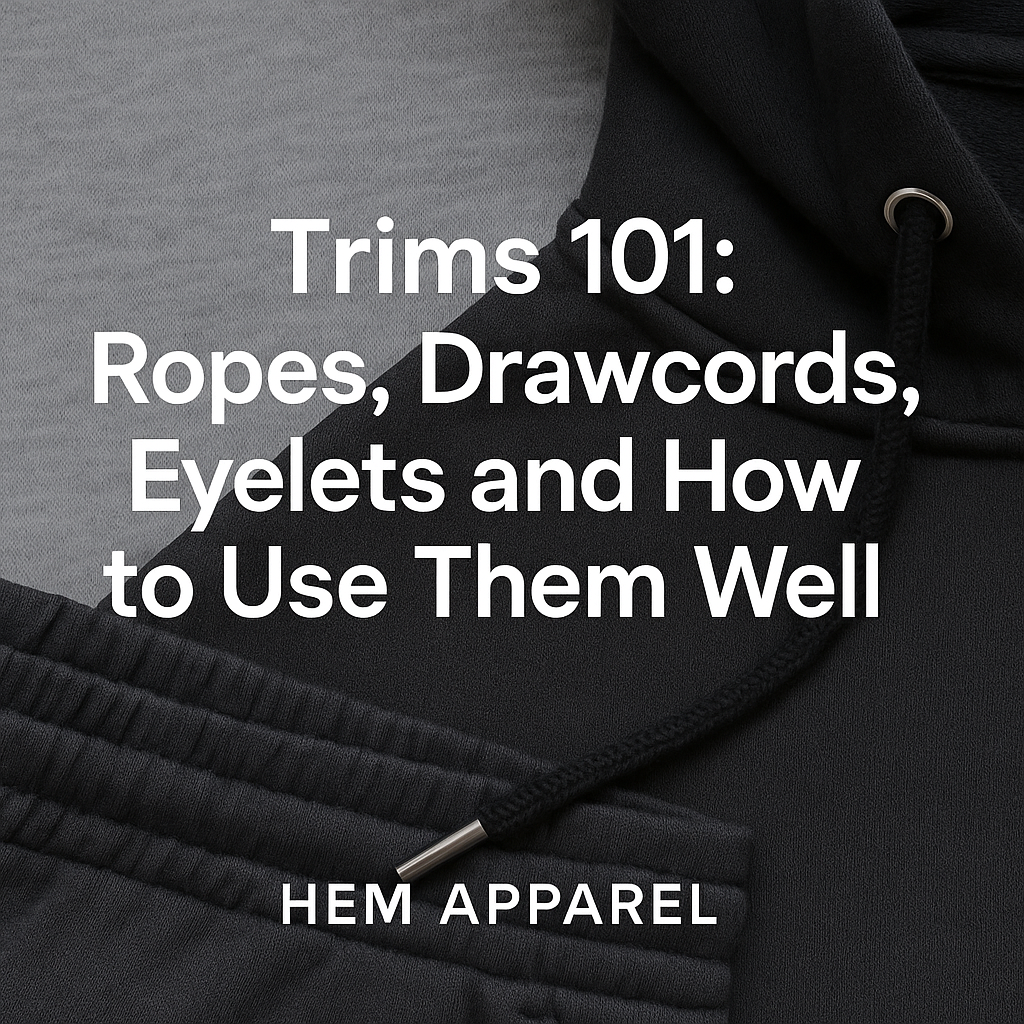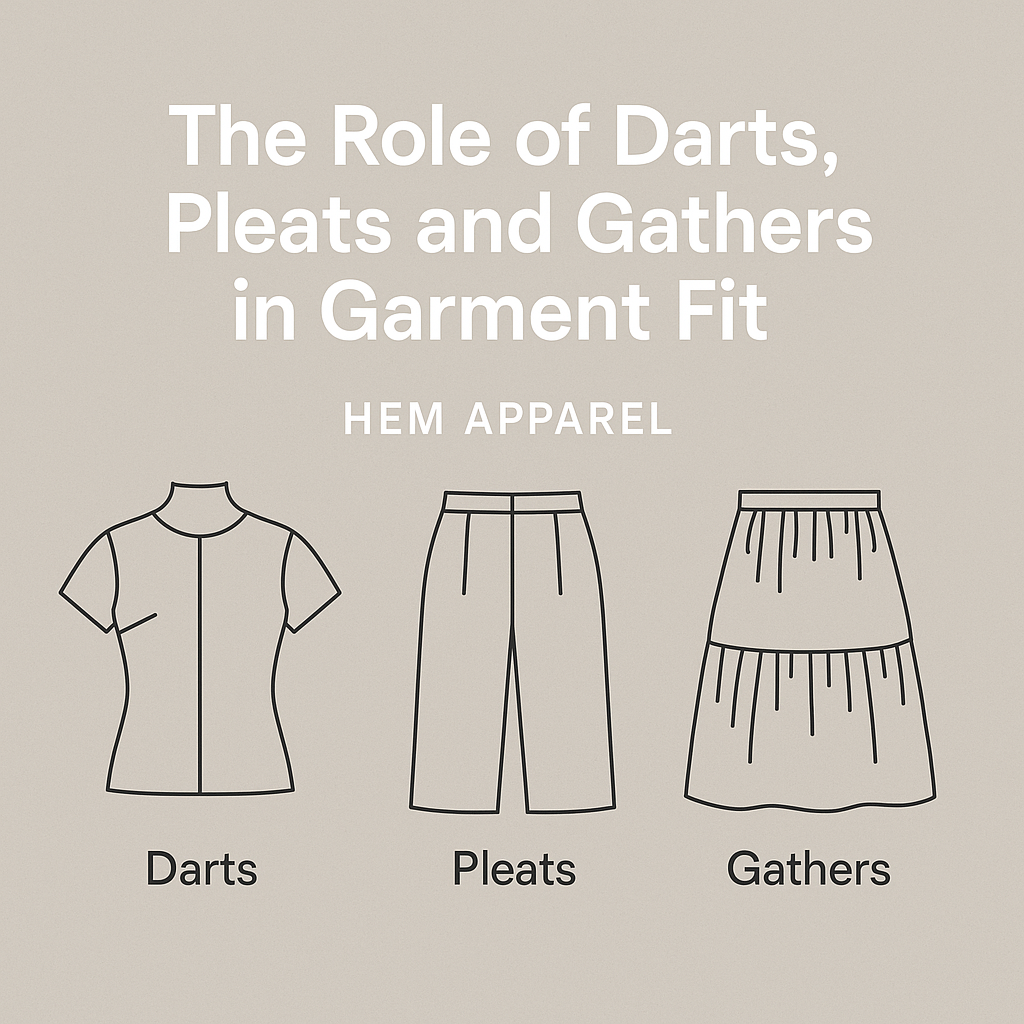Everything you need to know before choosing fabric for your clothing brand.
When it comes to creating a high-quality garment, choosing the right fabric is just as important as the design. At HEM APPAREL, we’ve worked with hundreds of brands to develop products across different styles — from basic tees to premium streetwear. Below is a quick breakdown of common fabric types we use every day, and how to choose the right one for your collection.
🔹 Cotton: The Foundation of Everyday Wear
What it is:
Cotton is the most popular natural fiber in the world, known for being soft, breathable, and versatile.
Common uses:
-
Basic T-shirts
-
Polo shirts
-
Lightweight hoodies
Variants we often use:
-
Combed cotton: Smoother and softer, less prone to pilling
-
Compact cotton: Densely spun, ideal for premium T-shirts (HEM uses 220–260gsm compact cotton for blankwear)
-
CVC (Chief Value Cotton): A cotton-poly blend, combining breathability with durability
Best for: Brands that want softness, comfort, and breathability as the foundation of their products.
🔹 Fleece: The Warm & Cozy Option
What it is:
Fleece is a knitted fabric (often cotton or poly blend) with a brushed interior for softness and insulation.
Common uses:
-
Hoodies
-
Sweatpants
-
Cold-weather loungewear
Types of fleece:
-
Cotton fleece: Heavier, breathable, natural feel
-
Poly fleece: Lightweight, moisture-wicking
-
Heavyweight fleece (320–400gsm): Ideal for premium streetwear and oversized fits
Best for: Winter collections, oversized silhouettes, or cozy pieces that require warmth without weight.
🔹 French Terry: Lightweight & Stretchy Comfort
What it is:
French Terry is a knit fabric with loops on one side and a smooth surface on the other — absorbent and slightly stretchy.
Common uses:
-
Joggers
-
Crewnecks
-
Transitional-season pullovers
Key differences with fleece:
French Terry is lighter and more breathable. It’s ideal for midweight items that can be worn year-round.
Best for: Athleisure, casualwear, and pieces designed for layering or light activity.
🔹 Other Fabrics You Should Know
1. Rib (1x1, 2x2)
Used for collars, cuffs, and waistbands. Adds elasticity and shape retention.
Tip: A thick 1” collar rib creates a premium look, commonly used in our heavyweight blank tees.
2. Interlock
Double-knit fabric — smoother, thicker, and more stable than jersey. Great for kidswear or structured tees.
3. Jersey
Most basic knit used for T-shirts. Can be 100% cotton or blended. Lightweight, soft, and breathable.
4. Woven Fabrics:
Used in button-down shirts, jackets, or uniforms.
-
Drill: Durable twill weave (e.g. workwear)
-
Oxford: Textured weave, semi-formal shirts
-
Poplin: Crisp and smooth, good for dress shirts
-
Flannel: Brushed surface for warmth
-
Corduroy: Ribbed texture, classic winter fabric
-
Seersucker: Wrinkled texture, breathable – perfect for summer
🧵 How to Choose the Right Fabric?
It depends on your product category, fit, function, and price point. At HEM APPAREL, we help you narrow down fabric choices based on your brand needs, season, and target market.
We also recommend using in-stock fabrics for speed and cost-efficiency, especially for small MOQ orders. For brands scaling up, we offer custom fabric development upon request.
✅ Work with a Manufacturer That Understands Fabric
At HEM APPAREL, we go beyond cut & sew — we start by helping brands choose the right fabric from day one. Whether you’re launching your first tee or upgrading your next hoodie collection, we’ve got the fabric know-how and sourcing network to match.
✉️ Need help picking fabric for your next product?
Let’s talk!





